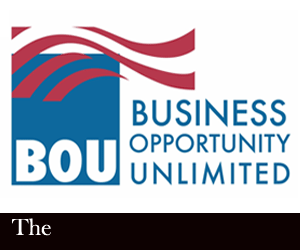There are two types of people in the world — reactive and proactive. Reactive people decide their course of action based on the situations they are presented. They usually end up making decision or taking action based on emotions and under circumstances that usually have many limitations. Proactive people on the other hand create situations they want by planning them ahead of the time. They decide their goals beforehand and set things in motion to make their goals come to fruition.
One of the most important decisions you can make as a proactive business owner is envisioning your exit strategy or succession plan. It is important to think about these questions in the beginning because the building blocks you put in place to build your company could be different depending on your desired final outcome. Do you want one of your kids to take over your company, or do you want to sell it? For example, ecommerce businesses that demand the highest price in the market are usually not tied to the owner or any key employee — in other words, these businesses have procedures and processes in place that makes it possible to run them on “auto pilot”. On the other hand, if your succession plan is to transfer the business ownership to a family member, you want to ensure this person understands mechanics of the business by getting involved in the business early enough and learning by “doing”.
Nothing is certain but death, taxes and the fact that one day you will exit your business. Owning a successful profitable business that provides income, an identity and a pride is not enough in itself to guarantee that you can maximize your business value. There were business owners who were hardworking, experienced, knowledgeable, and owned a very successful business yet could not demand the value their business deserved because they never developed an exit plan. So, what exactly is this exit plan that will help you create maximum value for your company?
There are many different types of businesses and so everyone’s exit plan will vary, yet almost all businesses have certain common elements that need to be considered. In general, exit strategy planning will involve understanding following aspects:
1. Determine Your Exit Option: Although there are many variations of business owner’s exit options, generally they fall into one of the following broad categories
Transfer of ownership to heirs during owner’s lifetime or at death
Sell to other owner (if partnership)
Sell to a third party
Liquidation and/or close down
2. Plan B: Every business owner needs a plan B. You always have options and contingencies in mind for business decisions and opportunities to consider. When it comes to what you do ‘next’ after this business, you need options too. Plan B could be as simple as closing up shop and walking away when you get tired of the business. Plan B could be what you will do next when your hands, your eyes or your legs won’t let you do any more of what you’ve been doing for the last 20 or 30 years. Plan B could be the fulfillment of every promise you made and every dream you have had over the last few decades. If you do not have plan B, you are in denial.
3. Plan Ahead: Every CEO is busy in their business, keeping it going, growing, and thriving. CEOs care about their customers, clients, staff as well as their outside support team, investors and others. But when you stay focused on today, tactics, and to-do, and then your view of the world is narrow and shortsighted. As the CEO, it’s your job, to look at the long-term goals and direction of the company, the future of the company and the security of your team. The CEO has the strategic responsibility to plan ahead. Own it and everyone will benefit. Ignore it or deny it, and your business will drift with no rudder. When you acknowledge your mortality and plan ahead for your exit, you ensure both your legacy and your dynasty will carry on.
4. Contingencies: There are business contingencies and there are owner/leader contingencies. As the CEO, you need both in place. Emergencies happen. We have no control over the weather, fire, flood, or earthquake. How will your business continue in spite of/around outside disasters? You need contingencies built in for the short-term or long-term loss of a key team member – do you and your staff know what to do in case someone breaks a leg or quits for health reasons? You need to document a process and a plan for how to proceed so the business does not miss a step. Most importantly, do you have contingencies in place so that if you must get out of the business, the business can continue? Have you made you irrelevant to day-to-day operations? These contingency plans reduce risk and add value to the business. They provide the terms and parameters for how you can indeed exit the business while preserving your legacy and dynasty.
5. Security: Your business is likely our most valuable asset. Therefore, while you are working, drawing a paycheck from the business, it is providing security. But as soon as you can not or choose not to continue in the role of CEO, what does that do to your financial security, especially long-term. You need to start building your exit strategy now so the business you have invested so much blood, sweat and tears into will indeed provide for the security of financial independence which you need when you exit. Setting up and implementing this one element can take years.
6. Build wealth: The biggest mistakes almost all CEOs make, is that they settle into building a business that provides only an income stream. They never set up the business to be a wealth-producing machine. They get to the point where they want to exit and there’s nothing there that can be monetized anywhere near the value they think it’s worth. Their wealth is so tied into the business; they can not leave with the financial independence they dreamed of. There is a solution. Is now the right time to think about exit strategy? You are quite busy so maybe you will look into it after. Just like purchase of a life insurance, the decision to plan an exit strategy can be continually postponed.
For your exit strategy to be most effective, it must be planned well ahead of the actual exit. Unfortunately when business must be sold, it is usually too late. The prudent address the inevitable and prepare. Remember when it comes to exiting the business, it is either Grow or Go, There is no Status Quo.































 +91 9909960054
+91 9909960054